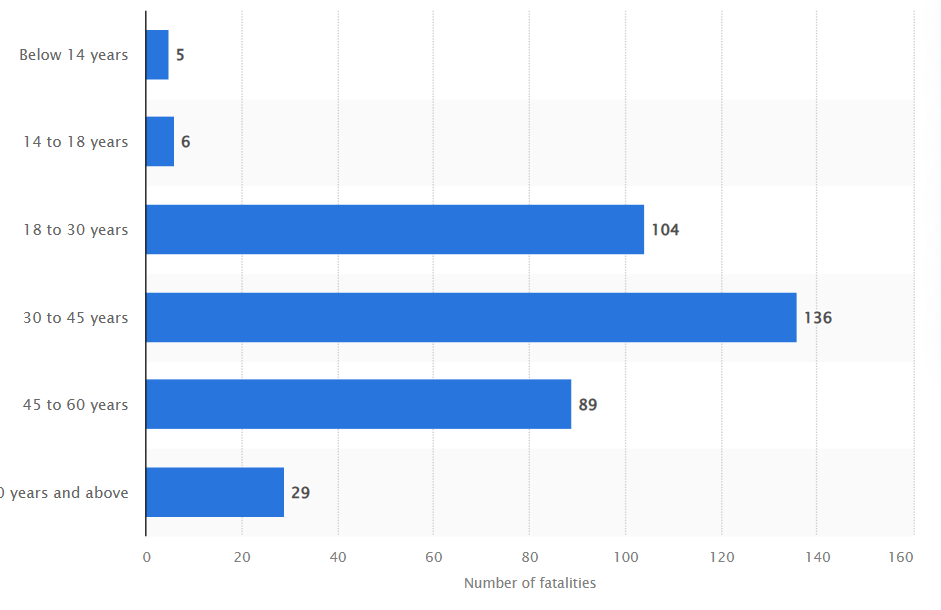
Every year, April 28 is observed as International Workers’ Memorial Day or International Commemoration Day for Dead and Injured, while May 1 is celebrated as International Labour Day in commemoration of the Chicago labour protest of 1886. However, these days pass without anyone sparing a thought on the plight of those industrial workers who do not enjoy the protection of any labour law.
Nearly 4% of the global GDP is lost due to accidents and work-related diseases, amounting to Rs 96.35 lakh crore in India. Memorial ceremonies for victims with flowers and candle lights alone will not suffice. Labour activists seek to fix responsibility for accidents, book the culprits, pay compensation to the victims, and take action to prevent recurrence.
According to joint estimates by the World Health Organization (WHO) and the International Labour Organization (ILO) for the period 2000-2016, a total of 1.88 million deaths in 2016 were attributable to the 41 pairs of occupational risk factor and health outcome. Diseases accounted for 80.7% and injuries accounted for 19.3% of the deaths. All covered diseases were non-communicable. The occupational risk factor with the largest number of attributable deaths was exposure to long working hours, followed by occupational particulate matter, gases and fumes, and occupational injuries.
READ I May Day 2023: The unfinished agenda of labour protection
India’s unprotected industrial workers
India’s share of deaths and injuries is particularly alarming. The British Safety Council reported that 48,000 workers die in fatal accidents at work every year in India. Globally, WHO estimates that 10 crore workers suffer injuries and one lakh die in accidents. In the case of fatal accidents, India contributed 45% of the total.
More than 7 lakh workers die globally due to occupational diseases, of which 1.19 lakh are Indians. However, it is difficult to get credible data on accidents at work, despite browsing through different sources like the National Crime Bureau, Labour Bureau, DGFASLI, DGMS, ESIC, and State labour departments. ESIC reported 2018 deaths during the year 2020 which rose to 5487 in 2021, a 171% jump in fatal accidents in just one year.
India: Age of victims of industrial accidents

ILO estimates that annually, 3.5 lakh workers die in accidents at work and more than 20 lakhs die of different occupational diseases. Thus, it can be seen that occupational diseases kill 6 times more workers than those who die in accidents. Around 31.3 crore workers suffer injuries in accidents at work, preventing them from attending duty. Annually, 16 crore workers get injured in occupational diseases. Occupational cancers, kidney and liver diseases following exposure to chemicals, and diseases caused by exposure to heavy metals like cadmium, chromium, lead, and mercury often go unreported.
At its 110th Session in June 2022, the International Labour Conference decided to include “a safe and healthy working environment” as a fundamental principle and right at work. The Occupational Safety and Health Convention of 1981 has been ratified by 76 ILO member countries. However, India has refrained from ratifying this convention, depriving workers in organized and unorganised sectors of the right to be protected at work.
As the first step to ratifying the Convention, India declared its National Policy on Safety, Health and Environment at work in 2009, but stopped short of ratification. Four labour codes have been passed by Parliament without discussion, which are not in line with the 2009 National policy. Last week, Tamil Nadu passed a rule giving freedom to extend working hours by employers.
India has an ambitious programme to eliminate tuberculosis (TB) by 2025, despite having 24.2 lakh TB patients. In 2022, the government launched a TB preventive therapy module. However, the International Commission on Occupational Health (ICOH) has called for a global effort to promote occupational safety and health (OSH) strategies to prevent TB in high-risk occupations such as mining and construction.
The India TB Report 2023 notes that co-morbidities such as undernutrition, diabetes, HIV, tobacco smoking, and alcohol impact patients and treatment. While the government has not yet initiated the National Silicosis Elimination Programme offered by ILO/WHO, workers will remain vulnerable to TB as long as they continue to be exposed to silica at work.
The Sustainable Development Goals (SDGs) aim for good health and well-being (SDG 3) and decent work and economic growth (SDG 8). However, according to the 2020 Country report on SDG performance by NITI Ayog, the overall index score for India is 64. More than 90% of workers are employed in informal employment, and approximately 80% are in the unorganized sector, which is not covered by the majority of labor laws. As a result, these workers lack access to benefits such as safety standards and minimum wage.
The lack of data on occupational health issues, including TB, is a serious problem. Without data, the issue may not be acknowledged, and budgetary allocation may not be made. This problem needs to be addressed urgently.
(Jagdish Patel is Director, Peoples Training & Research Centre, Vadodara. Antony KR is a public health consultant based in Kochi.)
